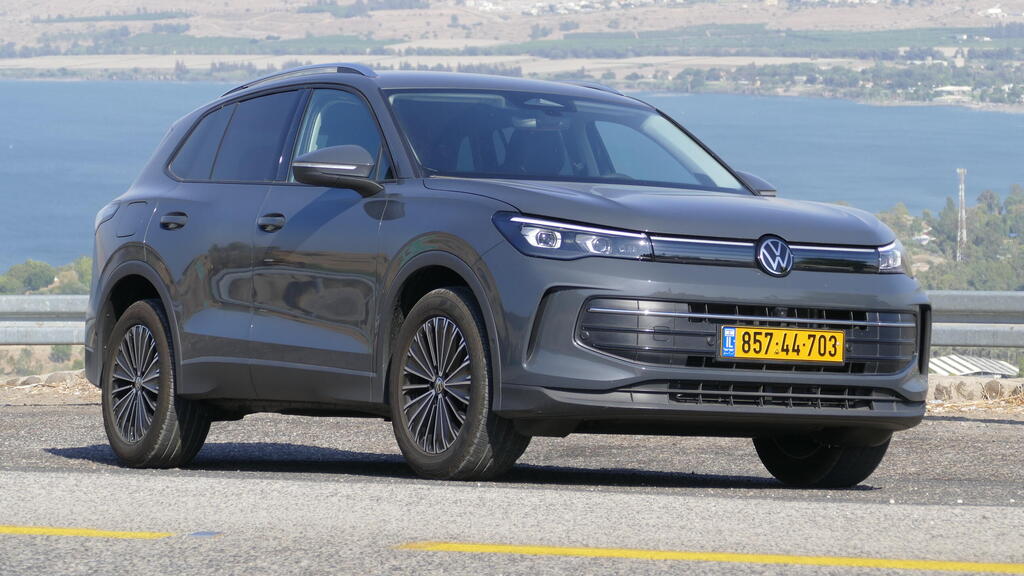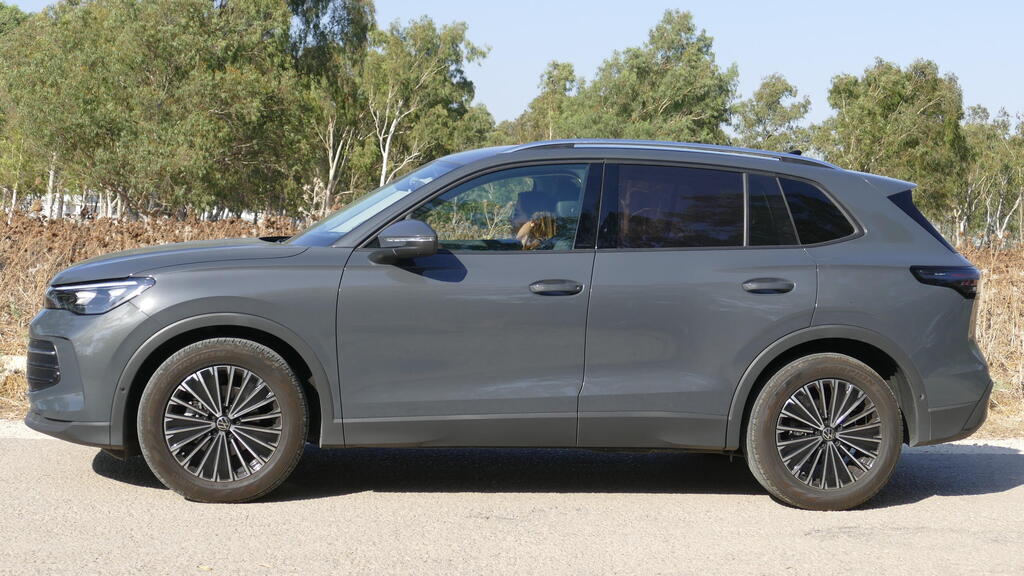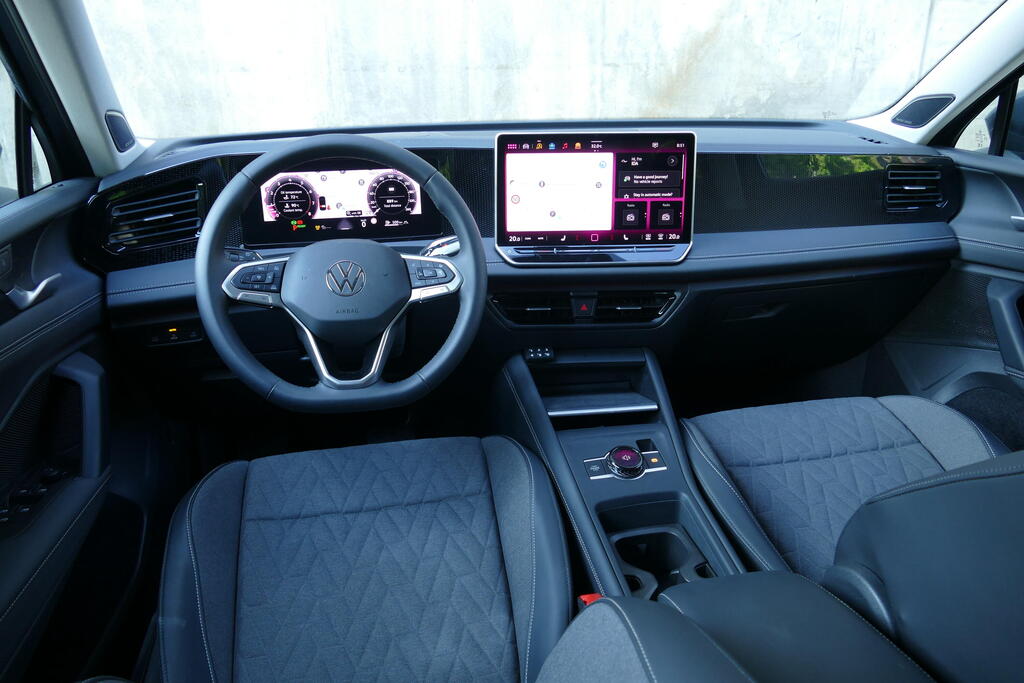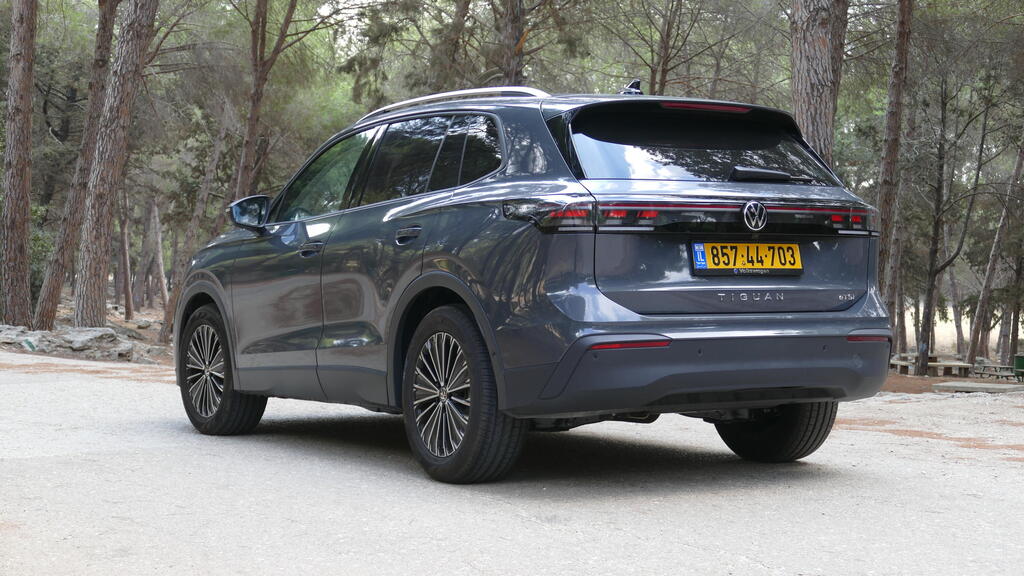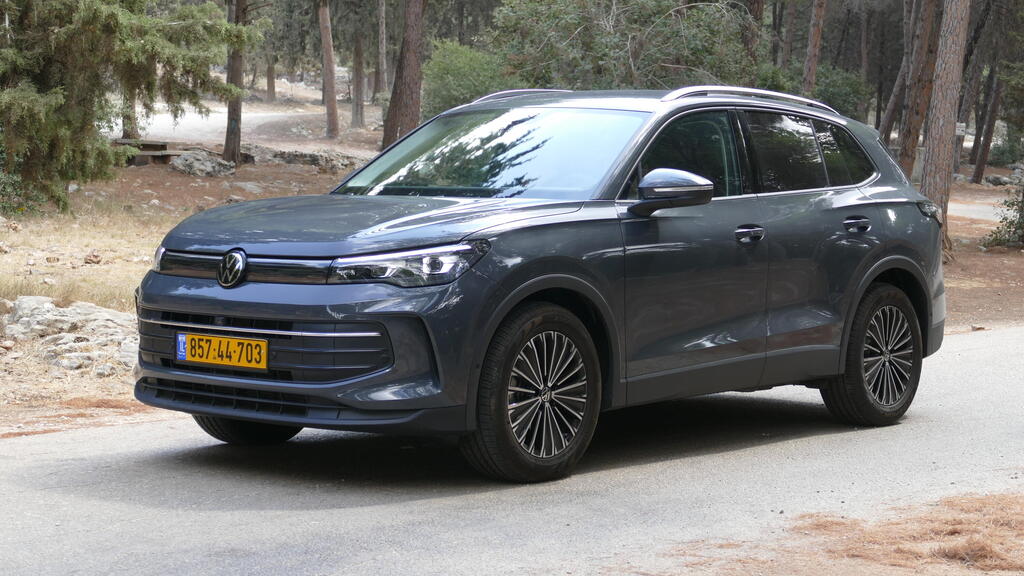With nearly 8 million units produced since its debut, the Volkswagen Tiguan is one of the brand’s biggest success stories. The first generation benefited from limited competition in its segment, while the second stood out with a more premium interior that rivaled even luxury SUVs, positioning it ahead of popular Korean models. Now, in its third generation, the Tiguan faces a new challenge – electric alternatives.
In Europe, it’s available with an advanced plug-in hybrid system, but in Israel it's offered solely with an older gasoline engine. More significantly, it now carries a hefty price tag starting at 218,000 shekels –about 20% higher than best-sellers like the Hyundai Tucson and Kia Sportage.
The significant price hike undermines its overall value, especially when compared to its direct competitors, which are 30,000 to 40,000 shekels cheaper. Even within Volkswagen’s own showroom, the Tiguan competes with the ID4 electric SUV, which is only slightly more expensive, and the Tiguan Allspace, which offers seating for seven at a lower price. Whether this is poor pricing strategy or an intentional move to upgrade its image remains to be seen.
The exterior design lacks distinction, featuring rounded lines and lighting elements reminiscent of Volkswagen's ID electric models. On the plus side, the drag coefficient has significantly improved (0.28 vs. 0.33). The driver’s cockpit is more impressive, featuring a larger touchscreen (12.9 inches, up from 8 inches) and more intuitive controls than Volkswagen typically offers, with customizable shortcuts and large icons. However, the brand has eliminated physical climate control buttons, forcing all adjustments to be made via the touchscreen – an unfortunate choice.
Other tech features include a 10.2-inch digital instrument panel and a head-up display that integrates navigation directions from Waze, displayed directly from a smartphone connected to the system. We also appreciated the rotary dial between the seats, which controls volume or driving modes.
The materials are of high quality in most areas, but the dark color scheme feels a bit gloomy, and the carbon-look finishes seem unnecessary. The ignition button is located in the center console, while the gear selector is near the steering wheel. This layout frees up storage space but creates a cumbersome start-up routine, opposite of what’s standard in most vehicles.
Two wireless charging pads are housed in a designated slot, but they lack built-in cooling, causing phones to overheat. Additionally, the air conditioning vents are placed too low, cooling mostly your hands. The front seats are comfortable and well-supported, offering a good driving position. Compared to the outgoing model, the new Tiguan is about 5 cm longer (454 cm) while the wheelbase remains unchanged (268 cm), resulting in the same spacious rear seating. The high seats in the back make it easy to install child seats, and rear passengers benefit from separate climate control and two USB ports.
However, the middle rear seat is stiff and narrow, and whoever sits there will have to contend with a high central tunnel. The trunk is generous, offering 652 liters (up by 37 liters) with practical storage compartments on the sides, a 230V power outlet, and a temporary spare tire.
The base model’s equipment list is extensive, including surround-view cameras, Matrix LED headlights, a smart key, and heated front seats and steering wheel. Safety features include autonomous emergency braking (a bit overly sensitive), lane-keeping assist, adaptive cruise control, active blind-spot monitoring (prevents lane changes when a vehicle is detected), and door-opening alerts.
In Israel, the Tiguan is only offered with Volkswagen’s 1.5-liter turbocharged 4-cylinder gasoline engine, paired with a mild-hybrid system (48V). Output remains the same as the previous model (150 hp), as does the rest of the drivetrain, featuring a 7-speed dual-clutch transmission and front-wheel drive.
While on paper performance has improved slightly, with a 0.1-second reduction in the 0-100 km/h sprint (now 9.1 seconds), real-world acceleration is unimpressive, especially during passing maneuvers and on hilly roads, largely due to the transmission's sluggish downshifting. In city driving and stop-and-go traffic, the gearbox can feel jerky and produce mechanical noise. Fuel efficiency is relatively good, averaging 11.9 km/l during the test.
Ride comfort is adequate in the city, though the firm suspension and large 18-inch wheels struggle to absorb small bumps. Comfort improves significantly at higher speeds on the highway, though wind and road noise become more noticeable.
Handling is relatively good, with safe and predictable behavior at its limits, but nothing beyond that. The steering is quick (two turns lock-to-lock) and precise, though lacking feedback, similar to the efficient yet uninspiring brakes.
The new Tiguan retains the familiar formula of its predecessor, delivering a comfortable ride both in the city and on the highway, while its tried-and-true powertrain offers only moderate performance. The cabin has been modernized with more features, including advanced safety systems, but all of this comes at a cost – and not a small one.


